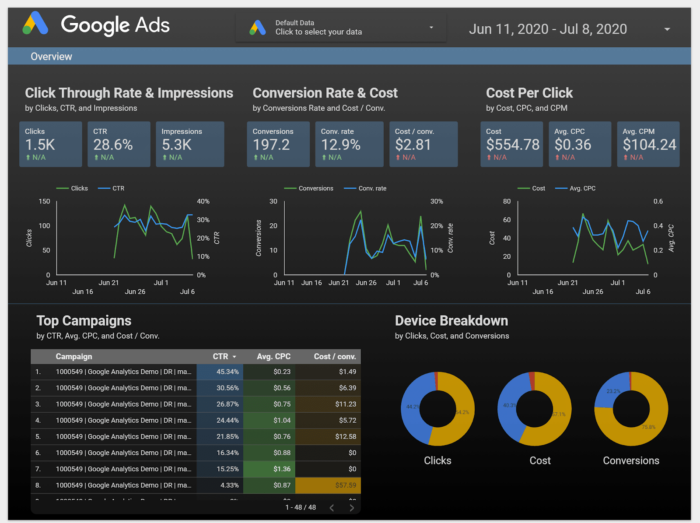17 Dominant B2B Ecommerce Marketing Strategies
Are you looking for the best B2B Ecommerce marketing strategies?
Well, you’ve come to the right place because that’s exactly what I’ll be covering in this post.
I’ll be going over the best practices and trends you need to implement in your B2B store. Overwhelmingly dominant strategies that will help you dominate your industry.
So, let’s get straight into this!
1. Publish SEO friendly content

What is SEO and why is it important for B2B marketing? SEO stands for Search Engine Optimisation. It’s the act of ranking for search terms related to your business. For example, you sell Asian clothes to retailers. A search term you would want to target would be, “Pakistani clothing wholesaler”.
It’s incredibly important to be ranking your business on a search engine such as Google because when someone has a question or they are searching for a product, their typical behaviour would be to Google it.
And SEO is inbound marketing. People are coming to you, you’re not going for a cold approach. The traffic is warm, they’re ready to buy from you depending on the keyword you’re going after.
For example, let’s say someone is searching for, “Why is my head hurting”? This is an informational search. The user isn’t in the buying mindset. Now compare that search query to, “buy cheap paracetamol”. The user is ready to buy right there.
This is what SEO is and why it’s important.
So, how do you do SEO? That’s what I’ll be going over in the next part…
Check out this business plan for your B2B website.
Laser keyword targeting
Make sure you’re tracking the right keywords.
What qualifies as the ‘right’ keywords?
- The keyword has to be related to your business
- Your website needs to be strong enough to rank for the keyword
- It has to be profitable
What do you mean by “Your website needs to be strong enough to rank for the keyword”?
Let’s say you’re a health company that specialises on losing weight. There’s a very strong chance you’re not going to rank for searches like “How to lose weight” and “weight loss supplements”.
These searches are very competitive because everyone’s searching for them so all the health companies want to go after those queries.

You need to make sure your keyword is profitable. To understand this, you need to know how the keywords relates to the buyer journey.
There are 3 main stages of the buyer journey:
- Awareness
- Consideration
- Decision
Awareness – The person is experiencing symptoms. Their tooth is hurting. The user is trying to understand what’s going on and doing research on it.
Consideration – The user has found the problem or opportunity and can give a name to it. Their tooth is aching because of a cavity and they’re trying to figure out the solution.
Decision – The user has now decided on their solution, strategy or approach. They’re currently searching for the product, service or solution strategy. The user has decided to go to the dentist.
Where does the keyword map to?

SEO is by far one of the best B2B eCommerce marketing strategies. A lot goes into it but it’s well worth it.
2. Track the right stuff

You need to make sure you’re tracking stuff, if not, you don’t know if what you’re doing is right. You don’t know where you’re going.
Do the basic stuff first and then work your way to more advanced tracking. Make sure you can track what products/services are being sold.
Make sure you can see which platform buyers are coming from. Is it Google, Bing, Facebook ads, Google ads, email, directly?
You need to understand the click through rate, what are the most popular pages and products?
What’s the average page load speed? How long does a user spend on your website?
What are the most popular exit pages? What’s your average ranking position on the Google search engine?
These are all important metrics to track. I would recommend creating a report that automatically updates. They’re a little difficult to create but Google Data Studio can help visualise this data.

If you want us to build you a custom report, email me at zukais@awaredigital.co.uk.
Make sure you’ve signed up for Google Search Console, Google Analytics and you’re tracking your keywords with a tool like SerpRobot. These tools, all FREE except from SerpRobot, these will help you track everything I’ve mentioned above.
3. Add reviews

Who’s going to buy a product/service that doesn’t have any reviews. No one! Or very few people. You don’t know what you’re getting yourself into when buying something that has no user reviews.
So make sure you’re collecting reviews. Make sure there’s an easy way for people to leave reviews. Email users you have sold to and ask them to leave a review.
Prioritise the users who absolutely love your product and reach out to them first.
4. Give lots of information on your products/services
Don’t give a tiny description or worse, no description. Make sure to fill it to the brim…
HOWEVER…
It CANNOT be filled with fluff. Make sure everything is absolutely relevant, take out anything which is unnecessary. Make sure there are lots of pictures, handle any objections a user may have. Include an F.A.Q.
Think really hard about it and do your research on what concerns people would have in buying from you.
This is a great example of a product page:
This is a great example of a product page because it answers a lot of consumer questions. Just read the description by checking out the page here. Also, it puts a buyer’s mind at ease, there’s an email to get in touch with support clearly stated on the page.
There’s free delivery and a money back guarantee. There are reviews you can check out and shipping details. You can see people clearly holding the product, giving a better idea of the size.
Oh, and I’m the one who created that page.
5. Use video

Video is a hot trend and it’s here to stay. As time goes on, YouTube will eventually replace Google as the most popular search engine (they’re owned by the same company).
It’s a great way to display your product. Video is a great way to show how your service works.
Maybe you sell a piece of software, use video tutorials to demonstrate how your product works.
Video builds trust and rapport with your website visitors quicker. It warms the traffic faster because you’re giving them a better overall experience with how your product works.
Please don’t just add video to the ‘to do list’. Make sure you actually get on top of it and start publishing video content. Upload it to YouTube and embed it on your website.
6. Test, test, test

How do you know if something is going to be effective or not? You test it!
One of the things that has an impact on your sales is the colours of the “Add to Cart Button”. What colour should you go for, the colour that’s the opposite theme of your website.
For example, let’s say your theme is blue, the opposite colour of blue is orange. This will allow for the button to stand out. If you’re not sure about this, test it.
Are you wondering if you should upsell a certain product over another? Test it.
What about product copy? Test it.
But when testing, only test one thing at a time in a funnel and make sure the pages are getting the same amount of traffic and the traffic source is the same to keep the results accurate.
You can use a tool called Hot Jar for testing.
7. Talk about the benefits not features
There’s a big difference between a feature and benefit. You can think of the feature as a specific technical item and the benefit as the prosperity the user will gain from it.
For example, a feature of a gaming monitor is its 144hz refresh rate. The benefit would be, it aids you in competitive gaming as the high refresh rate will allow you to see characters sooner, therefore allowing you to react quicker.
When writing copy, I like to do something like this:
Feature:
Benefit:
Feature:
Benefit:
Feature:
Benefit:
There’s a feature part and a benefit part. This is what it would look like for a protein powder product:
Feature: Contains 40g of protein per serving
Benefit: This protein powder helps you build muscle quicker thanks to its 40g of protein per serving. We all know that protein is the building block of gaining muscle and this is packed with it. You won’t get any stomach pains when consuming this and you can use it for baking some protein snacks as well!
As you can see, I’ve clearly mentioned the prosperity the user will gain from the feature. The prosperity they gain from using that protein powder.
List the features and explain the benefits.
One of most most under rated B2B Ecommerce marketing strategies out there. And it’s cheap to do!
Lightweight baby!
8. Understand the buying cycle

The buying cycles vary from company to company and product to product. Let’s use us, Aware Digital as an example, we’re a marketing company which specialises in building and marketing Ecommerce sites.
I want a piece of software that will track keyword rankings, I want a tool called SerpRobot to help me with this. It costs about $30 per month. I could get approval for that in 5 minutes.
Now, let’s say we’re deciding on a content management system to build client websites. We’re deciding from our current system, Magento and switching to Shopify. It’s not going to be a 5 minute decision.
This decision can easily take over a month.
WHY?
Because it’s a big step.
So when selling your product, ask yourself, is your product or service a big step for your ideal customer?
If so, be patient. Don’t keep pushing them. It’s annoying and they’re considering your product. Give it time.
What you can do is ask if they need any help. You can have a list of objections and concerns they may have and answer it in a blog post or video and send it to them.
9. Make sure you have a well designed website

A well designed website is going to be the foundation of your Ecommerce marketing strategies. It’s the base. A well designed website is going to allow your strategies to work.
If your website is built well, users will instantly know what your business is all about as soon as they land on your website.
What qualifies as a well designed website?
- Modern aesthetic
- Fast loading
- Mobile friendly
- Easy to read text
- SEO friendly
- Easy to use on the backend for developers and marketers
10. Make contacting support easy

If someone’s never heard from your business before and never purchased from them. Then they’re going to be wary. They’ll do their research and make sure you’re legit.
One easy way to show your authority and confidence in your product is by making sure support is easy to reach.
You can have a live chat available, a phone number they can ring and an email they can contact. I like to make sure the contact details are above the fold on the product page. It’s right in their face and they can’t miss it.
You can put next to the email address, “Get a reply within 24 hours”. This will reassure them that they’ll get all the information and support they need.
11. Create retargeting ads

Retargeting ads are ads that show in front of people who have already seen your ads and people who have interacted with your website.
This makes showing ads cheaper as the platform does not have to go find people to target.
Also, if the user found you via search, then it’s not cold traffic. They’ve already engaged with your business. So they are more susceptible to being sold to.
Let’s say someone is searching for a dentist interior designer and they searched that via Google, you were the first result and they click on your site.
You could run a retargeting ad on booking a consultation or maybe a discount.
There are many creative things you can do with retargeting ads.
12. Leverage Google Adwords
Google adwords is by far one of the most used advertising platforms, so take advantage of it.
If you have some search queries in mind that you really want to rank for, you can via Google adwords. It’s a cost per click platform, so you are billed on clicks and not impressions.
13. Leverage email marketing

You don’t own platforms like Google and Facebook but you do own your own email list. No one can take that away from you and you don’t have to pay anything to send an email.
Make sure you have an optin form so people put their email address in.
Create a lead magnet
Let’s be honest here… no one wants to give their email to you unless they have to. That’s why it’s worth creating a lead magnet.
A lead magnet is something that a user wants and they can have it in exchange for their email.
But they can easily unsubscribe when they get what they want.
Yup, I hear ya and I’ve been there. So here’s what you do…
You actually provide content they want.
I know, crazy, right?

Everyone knows that once you hand over your email address, you’re just going to get blasted with news that you don’t care about, offers on products you don’t want and they probably won’t even mention your name.
That’s a failed email marketing campaign right there. Straight to unsubscribe, block and spam.
Here’s one thing that will help and that’s segmentation…
Segmentation

Segmentation allows you to get real personal with your list.
You can have different campaign groups for different people.
Are you giving away an SEO checklist? Then you should ONLY send them SEO specific content and not general marketing stuff. If you think your list will be interested in other stuff, ask them.
But make sure everything is segmented. Delete anyone who hasn’t opened your email after 6 months, it’s not worth having them.
Make sure you don’t send an email everyday, that’s annoying.
Show some personality in the email. People buy from people, don’t be some cold corporation.
After they’ve given you their email, make sure you send them directly to a landing page which is a welcome message. There, you can tell them what to expect in the emails coming and provide VALUE.
14. Take advantage of niche specific platforms
Are you a commercial interior designer, then it’s worth advertising on a platform like Houzz since they’re all about building projects.
You don’t just have to be on Google and Facebook to get traffic, search for other places.
Find niche specific directories and forums. You can do this with a quick Google search. Type in, “[Industry] + forum” and you’ll find some good stuff.

15. Use cold email
Cold email is NOT dead. It works if you understand how to do it. It’s how I would land my clients.
Here’s what you do…
Build a database

The first thing you need to do is build a database.
First, find out where your customers are. Let’s say you’re a web developer who specialises in building websites for interior designers.
You can go to a directory like Houzz and scrape the data from there. Take the business’s details. You can hire a virtual assistant to do it.
I like to use a scraping tool like G7 Lead Finder. You search something like “Interior designers in London” into the tool and it will put the data in a spreadsheet.
Sort through the data, clean it up and then find the name of the person you want to contact (CEO) and their email address.
Do this for all the businesses, have the business name, person’s name and email addresses filled out. You can use a tool like Hunter.io to find an email address or the LinkedIn platform paired with a tool like Dux Soup.
Find something personal and have a case study
This deserves it’s own section. Find something personal and have a case study you’ve written.
Do NOT skip this step. It’s CRITICAL to the success of the campaign.
Business owners and decision makers are always getting emailed and pitched. Stand out by mentioning something.
But don’t be creepy and go on their personal profiles. Instead, follow the company’s business channels and check out their website. Try and find something personal from there.
Let’s say they’ve just got approved for a new contract, congratulate them on it.
Then mention the case study, how you did X for Y. Mention that you designed X company website and it brought Y more visitors to their website. Make sure the case study is niche/industry specific.
CRITICAL TIP: Pick a niche.
Use a cold email outreach tool

Please don’t do the email outreach manually. I was doing this and never knew you could get a tool for this.
You can use a tool like Mailshake. There are a bunch of different cold emails tools out there, Mailshake is easy that’s why I’m recommending it.
Make sure you use a template. This will allow you to pull in data from your spreadsheet/database so you don’t have to write every email.
Have a follow up email, no more than 2.
Check all the emails one-by-one and then send them!
We can get into more detail on cold email outreach another time.
16. Build a brand
People buy from brands, it’s what makes them feel safe and comfortable giving their money to another company. They want consistency in the quality of the product.
It’s what separates the good businesses from the great businesses.
When someone sees your content, they should be able to instantly recognise it was you.


As you can see, the content format for these YouTube channels are distinct. You can instantly recognise who’s content it is.
17. Make sure you have a report
It can get really overwhelming when you’re diving into one KPI after another. You’re in the trenches and it’s difficult.
To combat this, you need to take a birds eye view of where you are. This can be done by having a report.
A report is an easy way to see what’s going on in your Ecommerce store. You’ll be able to easily see everything you need to know.
I would recommend building a dynamic report. A dynamic report will allow you to adjust things like the date, traffic sources, devices etc. and it will automatically update.

So you won’t need to build a report every month. You can use a tool like Google Data Studios to accomplish this.
If you have no idea how to create this kind of report, email me at zukais@awaredigital.co.uk and I can help you out.
B2B Ecommerce Marketing Strategies Conclusion
So those were the most dominant B2B Ecommerce marketing strategies out there.
Make sure you implement them and prioritise the ones you think will work best for your business.